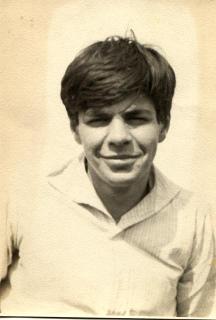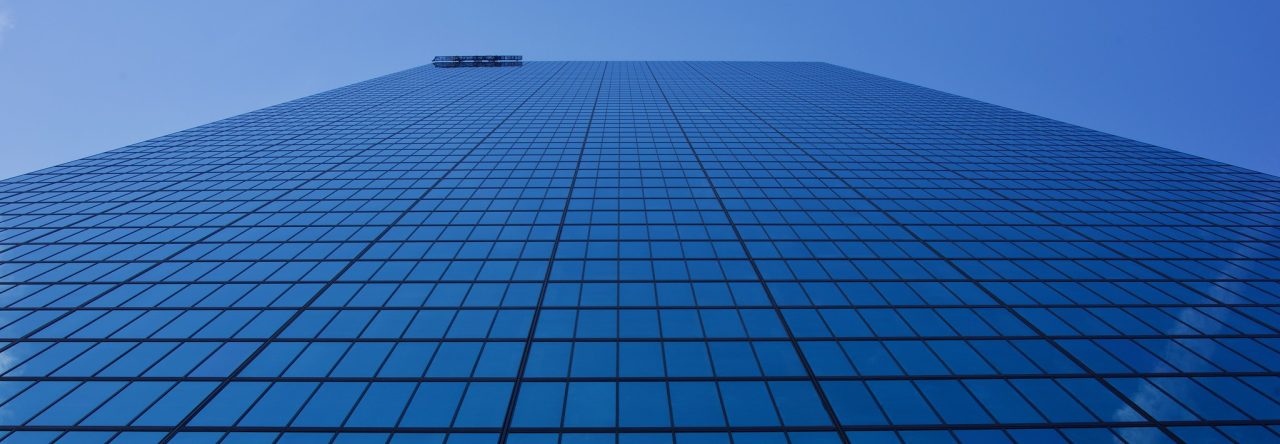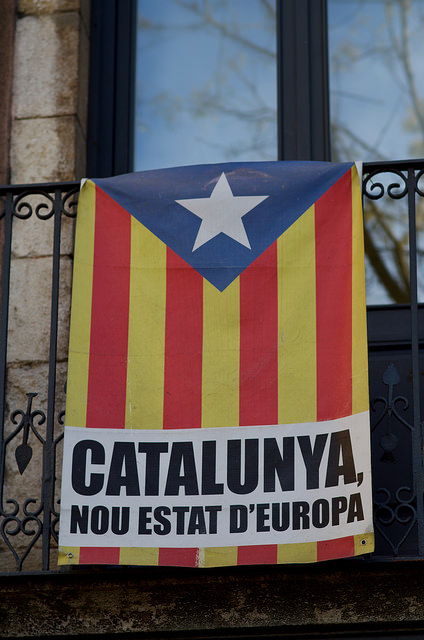Back to Barcelona for a week enjoying modernist architecture, Catalan food, radical politics, and a bit of rain.
Tag: Spain
After the emotionally exhausting trip to Belchite, we continued to Barcelona for some traditional sightseeing. We stayed at a “Medium Hotel” but I felt the room was more of a small. Luckily we’re a close family, and we survived three nights in a single room together.
We adjusted to the Spanish ritual of a late dinner, and ventured out on the street at 11pm on our second night. The closest restaurant recommended by the guidebook was El Glop, and it lived up to its name. The secret ingredient to their sangria was Fanta, which Hannah thought was delightful and Mom and I thought was gross. However, the calcots (spring onions) in an eponymous dipping sauce were excellent. We were provided with bibs and surgical gloves to eat them, which turned out to be necessary. At first I ate one without peeling it, which is the faux-pas equivalent of just biting into corn on the cob without husking. The bibs kept the glop from our shirts, and the fanta-sangria kept everyone in good spirits.
We were excited to find an antique market in front of the main cathedral, where we bought newspapers and currency from the war era. Mom befriended a seller there named Jackie, and she was kind enough to give us an original pin with the Republican colors.

Sam Levinger
1917-1937
Our visit to Spain was primarily a research trip for my mother’s in-progress book about her uncle Sam, who fought with the Lincoln Brigades in the Spanish Civil War in 1937. We knew from family lore and letters that he was wounded at the battle of Belchite, but not where he was buried. With the help of Alan Warren we determined that he was treated in a field hospital in Puebla del Hijar a few miles away, and buried there in the town’s memorial to the Republican dead.
The old town of Belchite was preserved by Franco as a monument to the war and a warning to those who would further defy him. It’s an eerie place, with two ruined churches, apartments half open to the elements, and broken bricks and roof-tiles everywhere. Our hoteliers at the Casa Rural Abuela Pilar warned us that it was filled with “fantasma”, and I don’t disagree. The brutal fighting and the destruction of the town presaged the viciousness of the Second World War.
The first objective in the battle was the Iglesia de San Augustin, surrounded by fascist machine guns and with a sniper in the bell tower. Contemporary accounts by soldiers make it clear that the town was well defended, and that the Republicans were probably outgunned. The commander called for an artillery assault to soften the defenses, but none came. Afraid of being exposed for too long to aerial attack and unable to retreat over open ground, the assault went forward. Sam was an ammunition carrier, and probably hit while bringing supplies to the front line.
The interior of the church is hauntingly beautiful, but appears to be falling apart faster than it can be stabilized. The roof is open to the sky, trees grow in from the side, and religious figures peer down from the ornamented ceiling to the broken tile floor. The site is not particularly well preserved; there is no interpretive information, and it was quite helpful to have an the expertise of Alan Warren to orient us and tell us from which direction the assault came.
The Lincolns were eventually able to capture the church, but at a high cost. Twenty three Americans were killed, and over sixty wounded, including Sam. He was evacuated by stretcher and then ambulance to Puebla del Hijar, 22 miles away. The road to Puebla is long and bumpy, and I imagine the ambulance ride would be quite an ordeal. Today the road is flanked by windmills that even Don Quixote might think twice about about charging.
The field hospital was in prefabricated huts that are no longer present, but the train station sits on the main square with a small memorial to those killed in the war. The town cemetery has memorials to both the Republican and Francoist dead, but the Republican monument did not include names of those buried beneath it. We can only assume Sam is among them. We said Kaddish and placed a granite plaque there in his memory, which Alan said the town mayoress would ensure was affixed permanently. In the meantime, we will keep his memory alive in our hearts, in our words, and in our deeds. No pasaran!
Landed in Madrid last night, after a 10 hour flight on which British Airways “involuntarily upgraded” me to World Traveler Plus. Not bad. They did lose my luggage in London, which deducts slightly from the experience, but I’ll get it tomorrow.
Walking around on Christmas Eve, the city was empty except for other tourists and “ladies of the night.” We had dinner at a Tienda 25, the only thing open for blocks. I had a box of gazpacho and a can of “Genuine Beer Style”.
Today the place was more crowded. The Plaza Mayor was filled with families, children. We were told that this was a popular place for pickpockets, so we watched our valuables closely. However, we were not prepared for… Spiderman!

